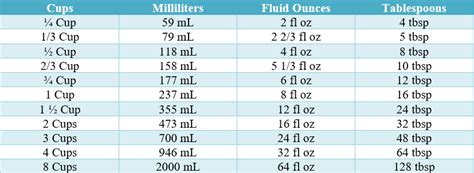12 Cups Is How Many Ounces
Kalali
Apr 01, 2025 · 4 min read

Table of Contents
12 Cups is How Many Ounces? A Comprehensive Guide to Fluid Measurement
Understanding fluid measurements can be tricky, especially when dealing with conversions between cups and ounces. This comprehensive guide will not only answer the question "12 cups is how many ounces?" but also delve into the intricacies of volume conversions, exploring different types of ounces, common mistakes, and practical applications to solidify your understanding.
Understanding the Basics: Cups and Ounces
Before we jump into the conversion, let's establish a solid foundation. We're dealing with two common units of volume measurement:
-
Cups: A cup is a unit of volume commonly used in cooking and baking recipes. While the exact volume can vary slightly depending on the region and context, the standard US customary cup is equal to 8 fluid ounces.
-
Ounces (fl oz): The fluid ounce (fl oz) is a unit of volume used in both the US customary system and the imperial system. It's crucial to differentiate between fluid ounces and avoirdupois ounces, which are units of weight and not volume. We're focusing exclusively on fluid ounces in this discussion.
The Conversion: 12 Cups to Ounces
Now, let's tackle the central question: 12 cups is how many ounces?
Since 1 US cup equals 8 fluid ounces, we can perform a simple multiplication to find the equivalent in ounces:
12 cups * 8 fluid ounces/cup = 96 fluid ounces
Therefore, 12 cups is equal to 96 fluid ounces.
Beyond the Basic Conversion: Exploring Different Scenarios
While the above calculation is straightforward for standard US cups, several factors can influence the precise conversion:
-
International Variations: Cup measurements can vary slightly across different countries. Some recipes might use slightly different cup sizes, leading to minor discrepancies in the final ounce calculation.
-
Contextual Differences: The specific context in which the measurement is being used can also matter. For instance, a cup of flour used in baking might not be precisely 8 fluid ounces due to the packing of the flour. In cooking, this difference is generally negligible, but in highly precise scientific or industrial applications, it’s crucial to factor in these variations.
-
Liquid versus Dry Measurements: While we're primarily discussing fluid ounces, it's important to note that measuring dry ingredients like flour or sugar in cups can lead to variations compared to measuring liquid ingredients like water or milk.
Practical Applications and Examples
Understanding the conversion between cups and ounces has numerous practical applications:
-
Cooking and Baking: Recipes often list ingredients in both cups and ounces. Knowing how to convert allows for greater flexibility when substituting ingredients or scaling recipes up or down. Imagine needing to double a recipe – understanding the conversion ensures you adjust the ingredient quantities correctly.
-
Beverage Serving: Calculating the amount of liquid needed to fill a pitcher or to serve several people becomes much easier with this conversion.
-
Scientific Experiments: Precise volume measurements are crucial in many scientific applications. Converting between cups and ounces might be necessary when using standard laboratory equipment.
Common Mistakes to Avoid
Several common mistakes can lead to inaccurate conversions:
-
Confusing fluid ounces and avoirdupois ounces: Always ensure you're working with fluid ounces (fl oz) when dealing with volume, not weight. This is a crucial distinction to avoid significant errors.
-
Failing to account for variations in cup size: Recognize that slight variations in cup size might occur, particularly when using non-standard measuring cups. For critical applications, using a precise measuring instrument is recommended.
-
Incorrect Conversion Factors: Using an incorrect conversion factor (e.g., accidentally using 7 fluid ounces per cup instead of 8) will lead to erroneous results. Double-check the conversion factor to ensure accuracy.
Advanced Conversions and Further Exploration
Once comfortable with the basic cup-to-ounce conversion, explore further related conversions:
-
Converting Ounces to Other Units: Fluid ounces can be converted to other units of volume such as pints, quarts, gallons, liters, and milliliters. Understanding these conversions enhances your versatility in various contexts.
-
Metric Conversions: The metric system uses milliliters (mL) and liters (L) for volume measurements. Learning how to convert between cups and ounces to milliliters and liters is essential when working with international recipes or scientific data.
-
Understanding Density: While this article focuses on volume, understanding density is important, especially when dealing with different substances. The same volume of different substances can have different masses.
Conclusion: Mastering Fluid Measurement
Mastering fluid measurement conversions, specifically understanding that 12 cups equals 96 fluid ounces, is a valuable skill applicable in countless scenarios. From cooking and baking to scientific experiments, having a solid understanding of these conversions ensures accuracy, efficiency, and avoids costly mistakes. By remembering the basic conversion factor and avoiding common pitfalls, you can confidently navigate the world of fluid measurements. This comprehensive guide aims to provide a foundation for further exploration of volume and related concepts, helping you to perform conversions accurately and confidently in your daily life.
Latest Posts
Latest Posts
-
Do Elements In The Same Period Have Similar Properties
Apr 02, 2025
-
How Big Is 24 Cm In Inches
Apr 02, 2025
-
How Many Ml Are In 60 Oz
Apr 02, 2025
-
Cuanto Es El 60 Por Ciento
Apr 02, 2025
-
4 To The Power Of 1
Apr 02, 2025
Related Post
Thank you for visiting our website which covers about 12 Cups Is How Many Ounces . We hope the information provided has been useful to you. Feel free to contact us if you have any questions or need further assistance. See you next time and don't miss to bookmark.
